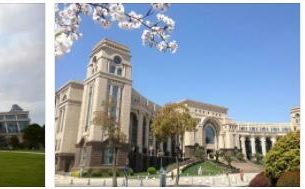History of Syria
The first traces of human presence in Syria date back to the early Paleolithic era. The English archaeologist L. Woolley in 1927-28 excavated the city of Ur on the Euphrates, the legendary homeland of the forefather Abraham. In 3-2 thousand BC. almost continuous wars were going on in the territory. Syria was conquered in turn by the Egyptians, the Hittites, and the Arameans. In the beginning. 10th c. BC. on the territory of Syria, the Aramaic Damascus kingdom arose, from the 8th century. which was part of Assyria, then the Neo-Babylonian (from the 7th century BC), the ancient Persian kingdom of the Achaemenids. In 333 BC The army of Alexander the Great invaded the country. After the collapse of his empire, Syria received the status of a province within the vast Hellenistic state of the Seleucids. In the 3rd century BC. The Seleucids founded the Kingdom of Syria in this region, which after 2 centuries was conquered and became a province of the Roman Empire. After its collapse, it was part of the Byzantine Empire for 240 years. During the years of the Umayyad Caliphate (661-750), Damascus became the capital of the entire Arab state. This period is characterized by the Arabization of the population of Syria – the spread of the Arabic language and the conversion of most of the inhabitants to Islam. With the coming to power of the Abbasid dynasty, the capital was transferred to Baghdad (in 762), and Syria lost its privileged position. After the final collapse of the Abbasid Caliphate in the 10th c. several local dynasties ruled in feudally fragmented Syria, of which the Hamdanid dynasty (928-1003) is the best known.
In the 10th-11th centuries. a significant part of the country was captured by the Seljuk Turks. In the 11th-13th centuries. the era of the Crusades. In 1187, at the call of Salah ad-Din al-Ayyubi, a holy campaign of Muslim troops against the crusaders was launched. As a result of a series of fierce battles, by 1192 almost the entire territory of Palestine and Syria was again under the rule of the Arabs. From the 8th c. to early 16th century Syria was ruled by the Egyptian Mamluks. In 1516, the Turks captured Egypt and Syria, and until 1918 Syria was part of the Ottoman Empire.
After the defeat of Germany and its ally the Ottoman Empire in the 1st World War, France received a mandate to govern Syria. The republic was proclaimed in 1941, and the country gained full independence in April 1946. From 1958–61 it was part of the United Arab Republic (UAR). In March 1963, the Baath Party came to power in Syria, ruling to this day. In 1967, during the Six Day War with Israel, Syria lost the Golan Heights. In 1970, General Hafez al-Assad, who had previously been Minister of Defense, came to power and united several political parties into the Progressive National Front. The rest of the parties were banned. The period of Assad’s rule, which undoubtedly brought stability to the life of the country, was overshadowed by another Arab-Israeli war – the Yom Kippur War, which not only failed to return the Golan Heights.
Science and culture of Syria
According to searchforpublicschools, the number of students at all three levels of education in 1998/99 was 4147 thousand people, and teachers of all forms of education – 202 thousand people.
The total number of primary schools is 10,000. 151,000 people studied at universities. The largest scientific center is Damascus University. In addition to the faculties, classes are conducted there in several autonomous institutes and colleges. There are also universities in Aleppo and Latakia.
The modern literary life of Syria is characterized by the development of all types and genres of this type of artistic creativity. A prominent place in Syrian prose is occupied by the writers Khana Mina, Khairi al-Dhahabi, Walid Ikhlyasy (novelist, playwright), Ahmad Aud, and others. Among the poets are representatives of the classical system of versification (Nizar Qabbani, Suleiman al-Isa, Nadim Muhammad, etc.) and representatives of modern poetry (Adonis, Shauki, Baghdadi, Ali al-Jundi, etc.). In the context of the rise of the national liberation movement, many talented artists appeared, the most famous of which are Farid Kardus and Nazem Jafari. In 1956, the “Syrian Society of Art” was founded.
Damascus, the capital of the country, is one of the oldest cities in the world. Old Damascus is included in the UNESCO World Heritage List. In this part of the city, enclosed by an ancient fortress wall, there are many beautiful old buildings and historical monuments: from ancient Roman times – the central street with the remains of colonnades and gates; operating aqueduct; from the time of the caliphate – the famous mosque of the Umayyads of the 8th century, the palace of al-Azem, etc.
In the north-west of the country, in the ancient city of Aleppo (Aleppo), on the rocky bank of the river rises the Aleppo citadel of the 12th-13th centuries; Great Mosque of the 8th-13th centuries; mosque-madrassas of the 12th and 13th centuries. The city has the Aleppo Museum (history, ethnography, archeology), the Roman royal necropolis, the citadel, the Nurad-Din mosque of the 12th century. and etc.
The most significant sights of the country are located near the city of Tadmor, the ancient ancient city of Palmyra (1st-4th centuries), a major center of caravan trade and handicrafts. The central streets with colonnades, the sanctuary of Bela with a temple of the 1st century, a theater, etc., have survived. Not far from Latakia is the hill of Ras Shamra, where the remains of the Phoenician city-state of Ugarit (2_e millennium BC) were discovered. Krak des Chevaliers – a fortress built by the Crusaders on a hill to the west of Homs, is a unique monument of medieval fortress architecture.
The National Museum of Damascus has excellent collections of Greek, Roman, Byzantine and Arabic art.



